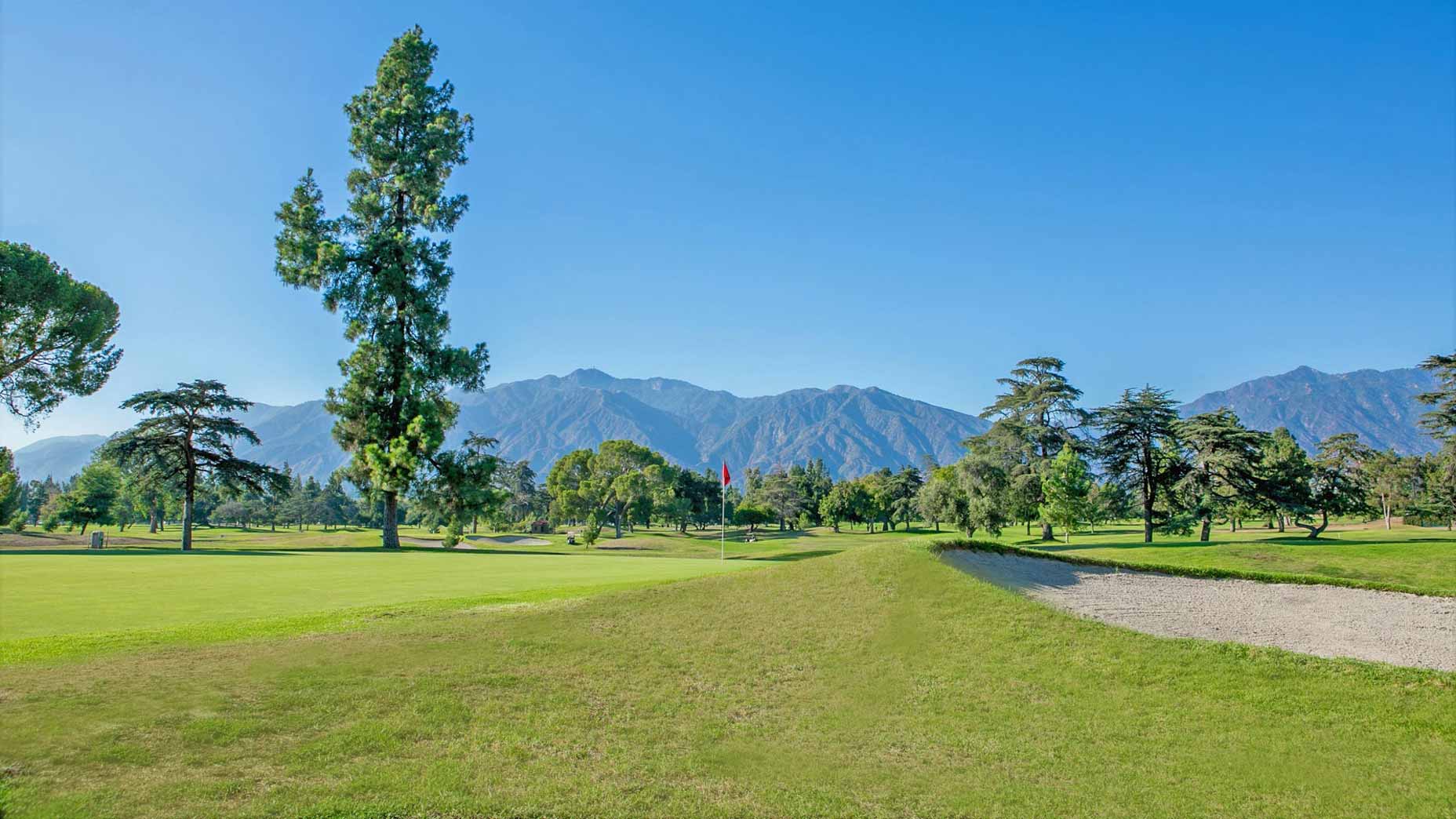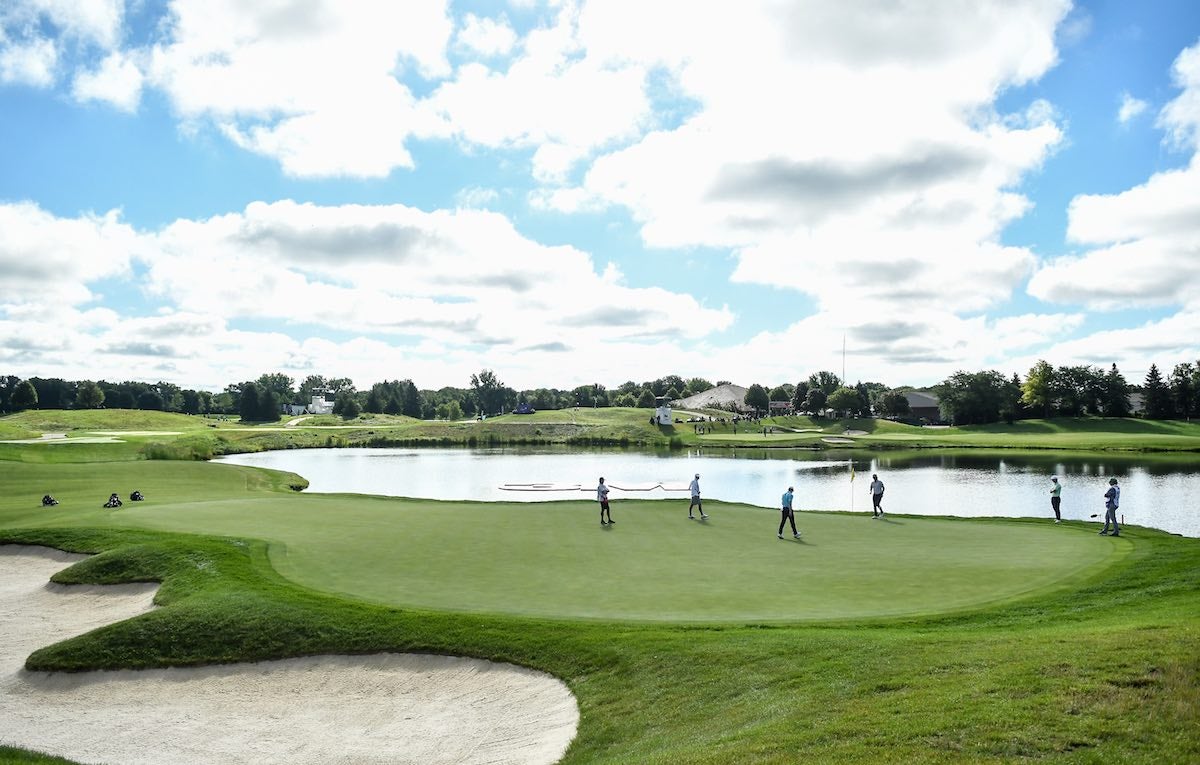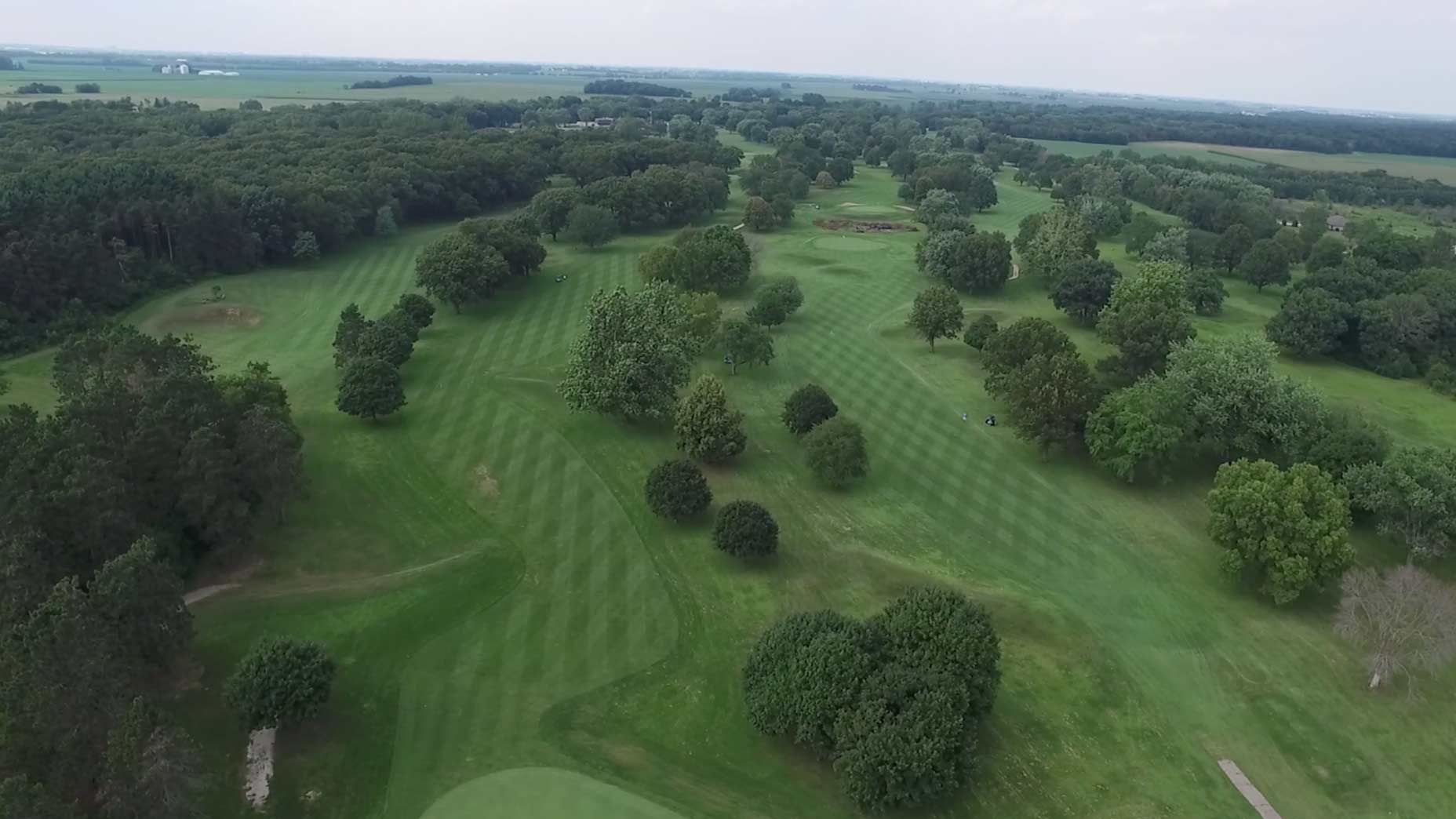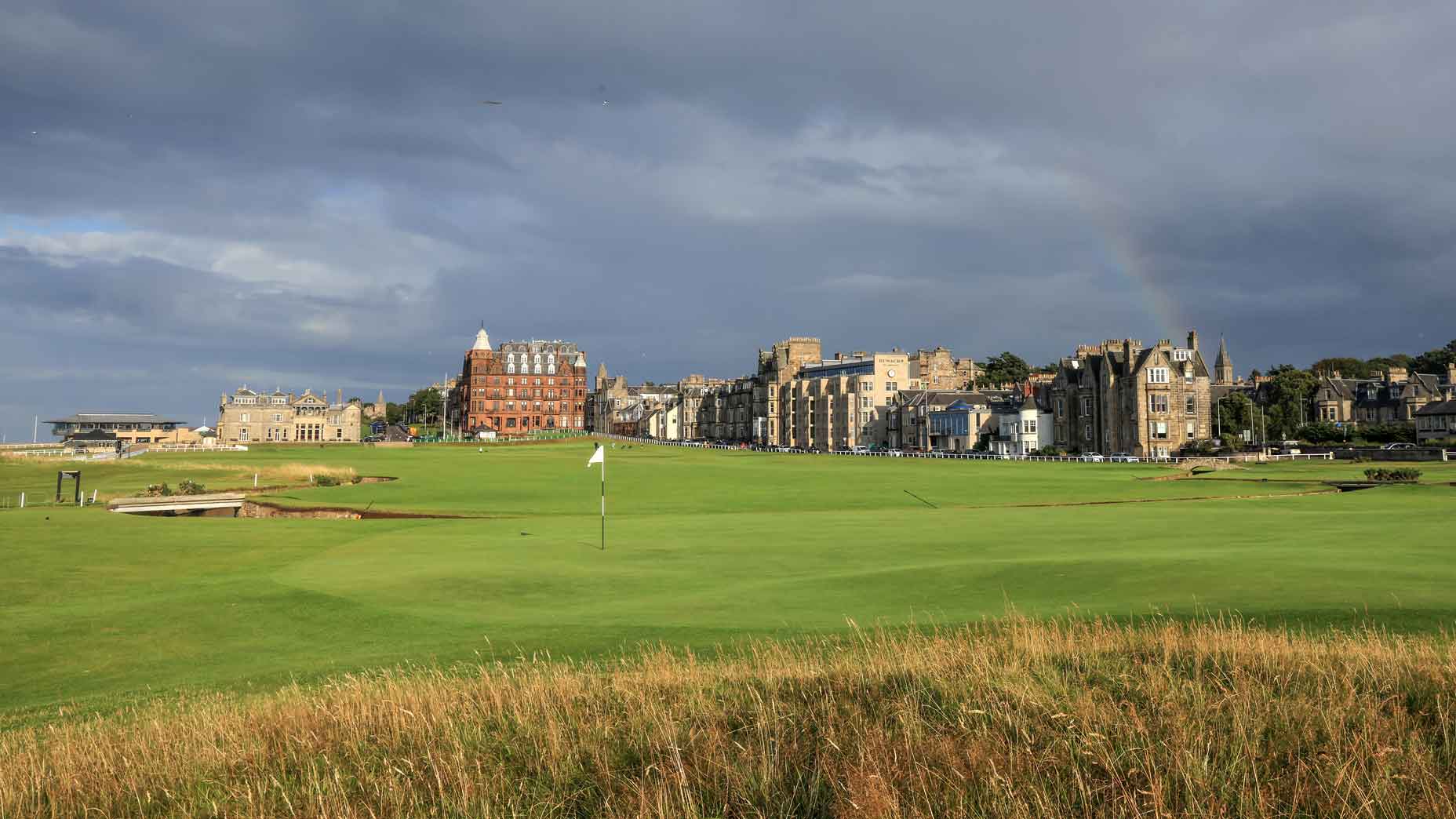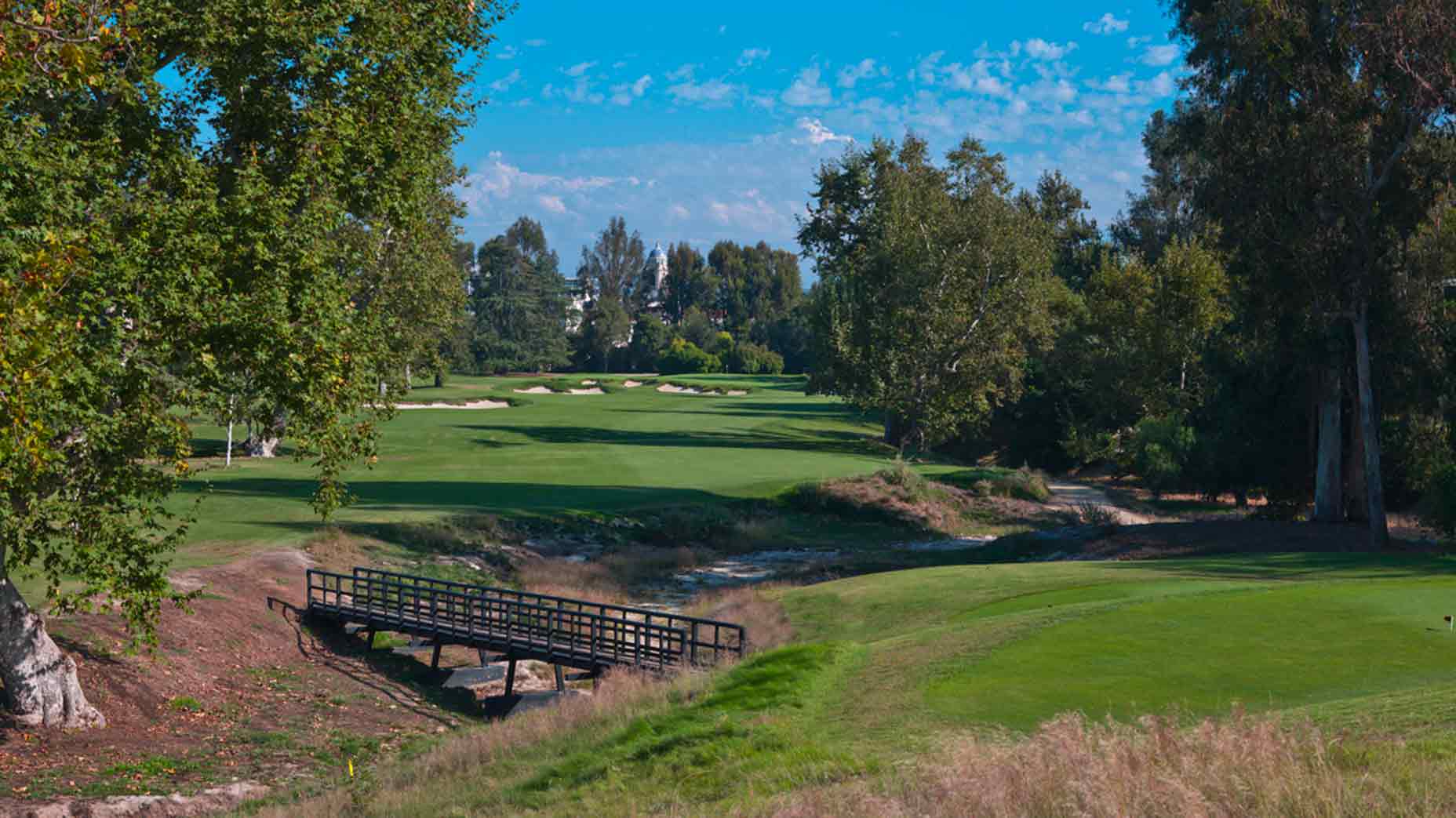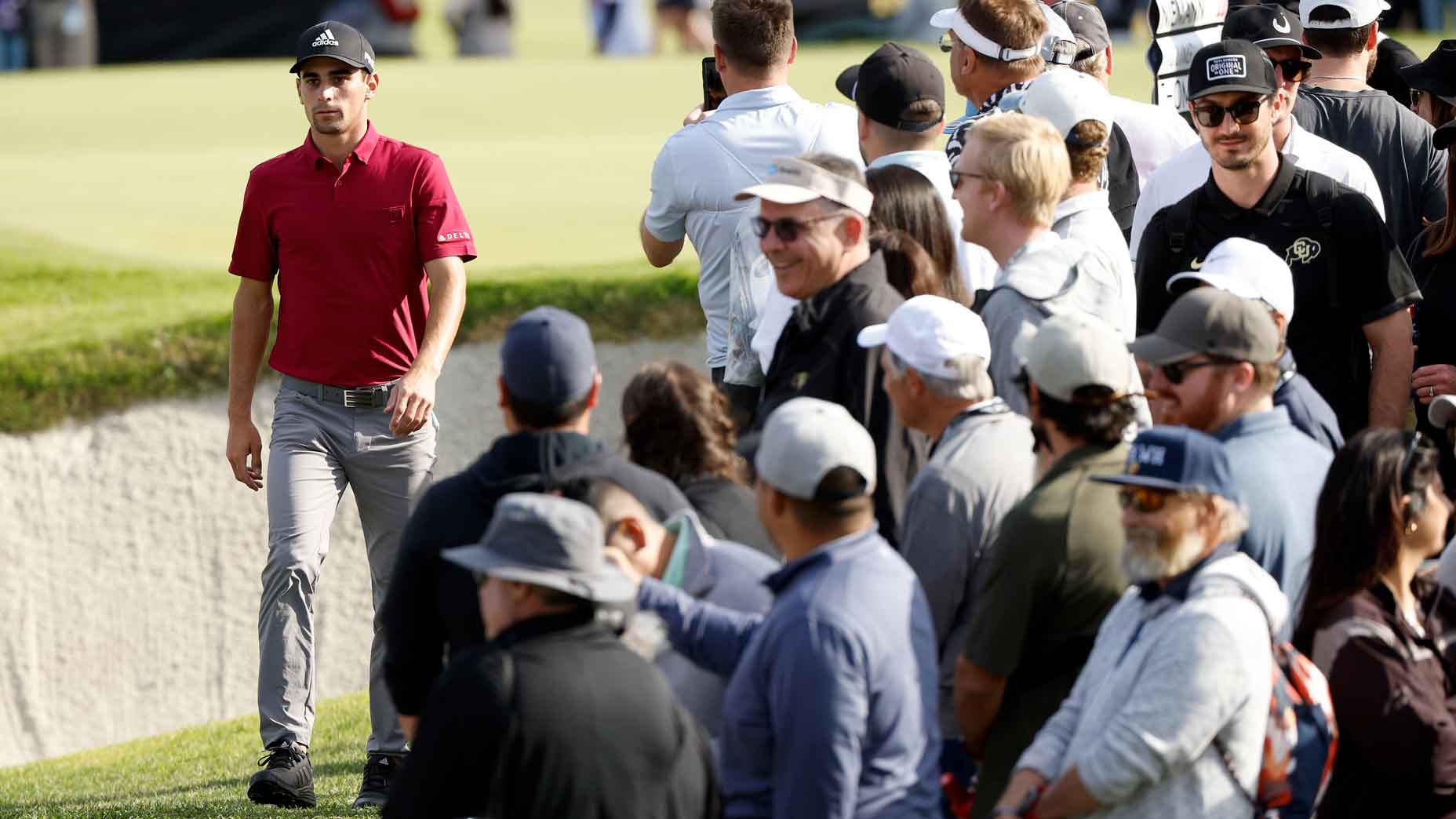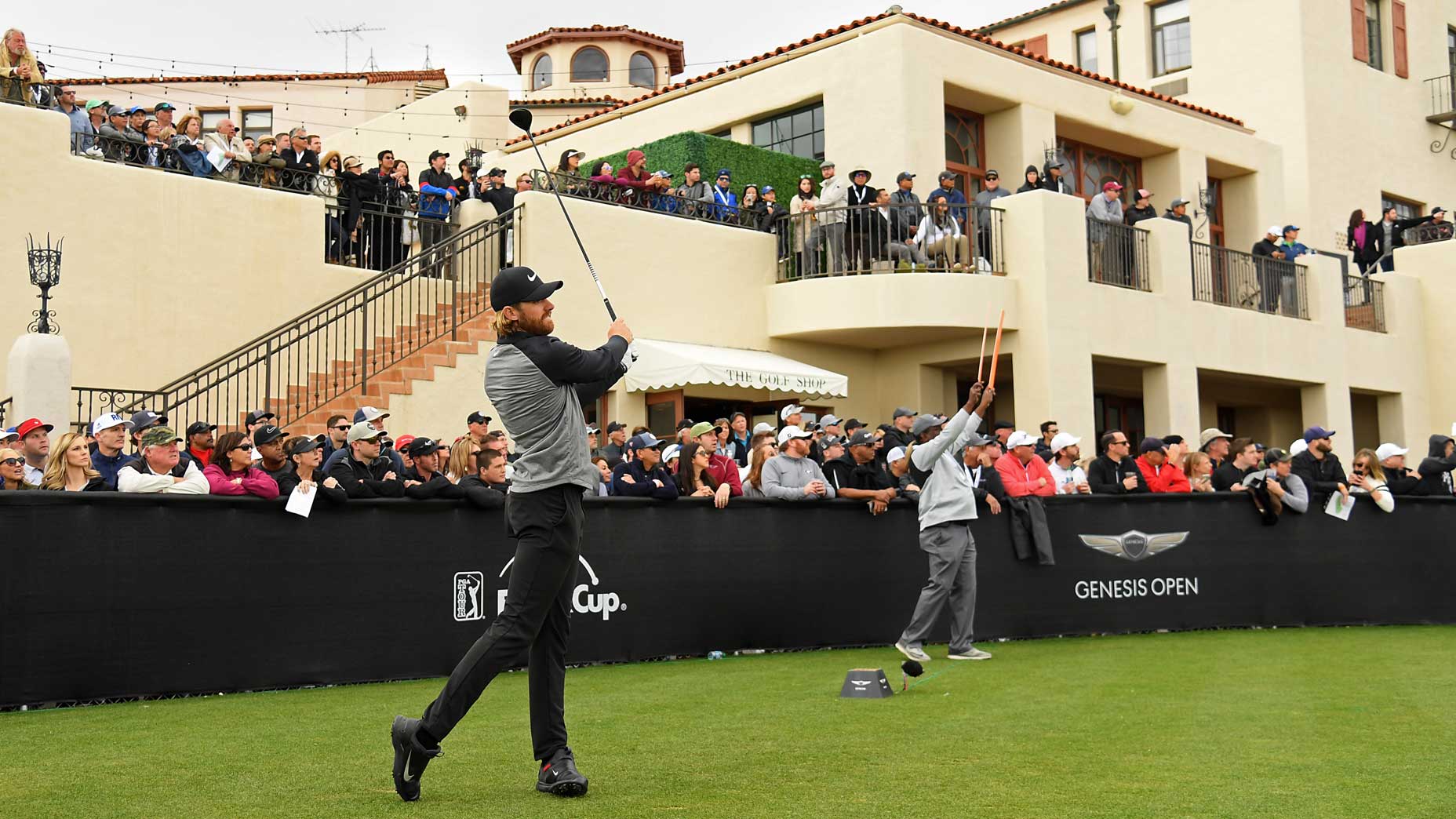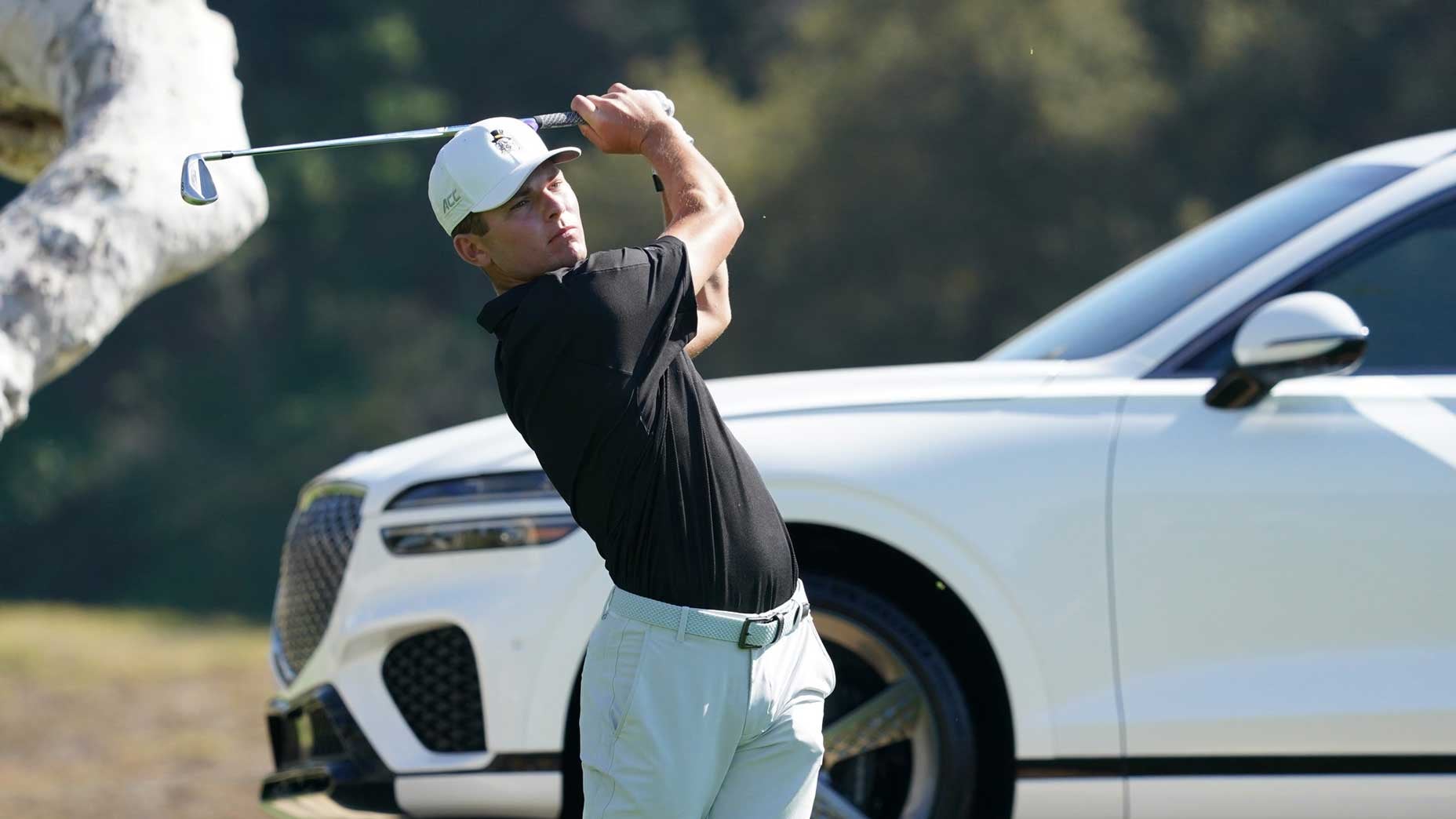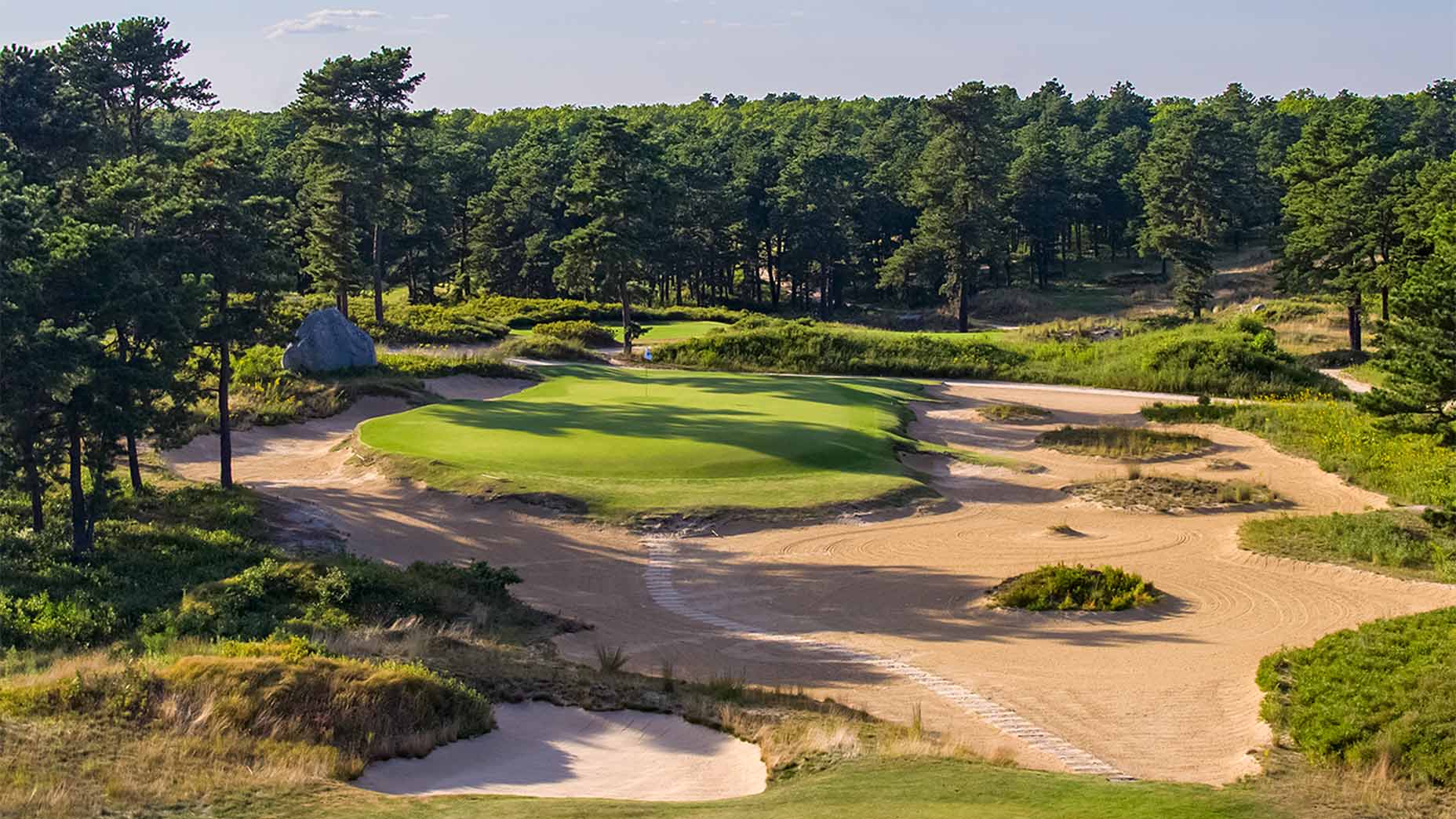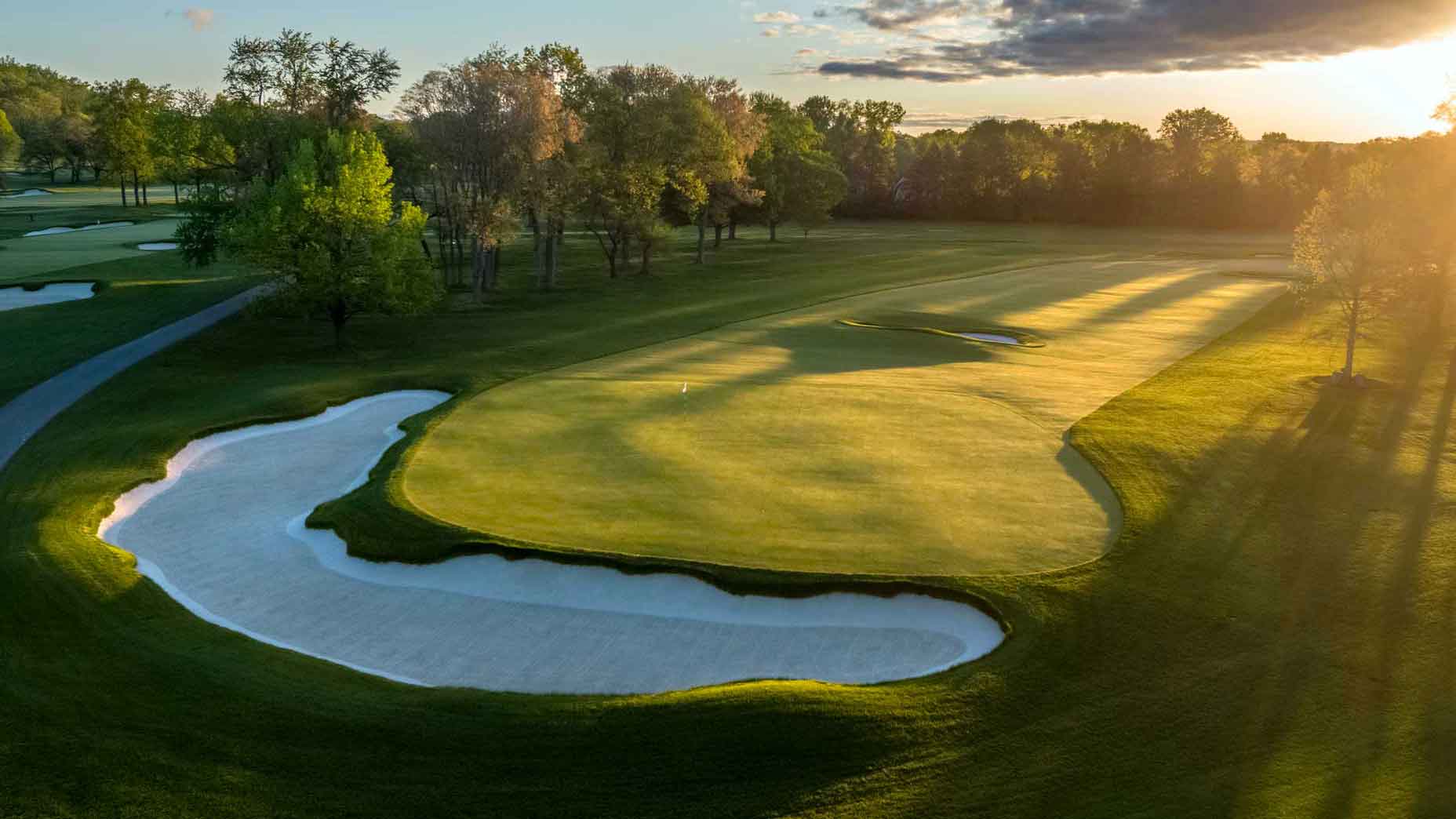GOLF’s Top 100 course panelists are among the most respected and well-traveled course evaluators in the game. They’re also keen to share their opinions. In this GOLF.com series, we’ll unlock their unvarnished views on all questions course-related. The goal is not only to entertain you but also to give you a better understanding of how to understand and appreciate golf course architecture. You can see GOLF’s latest Top 100 Courses in the World ranking here, and meet all of our Top 100 panelists here.
With the PGA Tour in Southern California this week for the Zozo Championship, we’d like to get your insights into Los Angeles-area golf. Let’s define our boundaries as anything within a (traffic-free) hour’s drive of downtown LA.
On GOLF Magazine’s new list of Top 100 Courses in the United States, Los Angeles CC North gets top billing in the Los Angeles area, with Riviera close behind. Do you agree with that ranking? And what if we were looking for the top three LA-area courses? Which course would you add?
Noel Freeman (panelist since 2010; has played 81 of the World Top 100): I do agree with that ranking. LACC’s restoration was one of the best of the recent past. The attention to detail in the natural appearance of the bunkering, plus the way the land unfurls just makes for better grounds for golf. Furthermore, the re-infusion of strategy, thanks to vegetation clearing and width building along with the repositioning of greens back to where George Thomas put them makes LACC flow better. LACC’s routing, especially on the front nine (the reclaimed 2nd hole, drivable 6th) is perfect for taking you around the property. The 11th is the best par-3 in Los Angeles. Oh, and I may be a period piece-lover but the bye hole 17th is a real treat to play. Gil Hanse and Geoff Shackelford restored it, and it’s one of the remaining Herbert Fowler touches.
Course Rater Confidential: What’s a hidden midwestern gem I should play?By: Top 100 Panelists
By contrast, Riviera has, in my opinion, lost some of the naturalness of its hazards: just look at the old pictures. It remains a great and mighty golf course but if they took the ethos that LACC took in restoring it, it would only enhance its shot values. What I love about playing Riviera is the variety of shots it calls for, and aside from the 1st hole, it is a true challenge. Riviera also has one of the iconic par-4s in golf (the 10th), along with pomp and majesty of the clubhouse location and the amphitheater 18th.
Steve McHugh (Panelist since 2009; has played 75 of the World Top 100): I enjoy the strategy and shot value at Riviera more than at LACC. The redo is fabulous at LACC and it is a great place, but for straight golf, I prefer Riv. As a club, Riviera has a long way to go to make it friendly and welcoming. If Riv had a redo like LACC, it would be spectacular!
Thomas Brown (Panelist since 2015; has played 95 of the Top 100): Bel-Air Country Club is the third leg of the George Thomas triumvirate. Tom Doak’s Renaissance Golf Design restored strategic elements to the canyon layout in 2018, and GOLF Magazine panelists recognized the improvement by moving it up twelve slots to 68th in the recently released Top 100 courses in the U.S. Thomas was an amateur golf architect visionary and wrote in detail on Bel-Air’s strategy, advocating for uneven terrain and variety as important design factors in the club’s newsletter during the development of the course. Thomas’ shaper Billy Bell must have been instrumental in developing the historically significant bunker style that we recognize today. Bell went on to become a founding member of the American Society of Golf Course Architects in 1947.
Niall Hay (Panelist since 2020; has played 65 of the World Top 100): Any discussion of Los Angeles area golf begins with the Thomas Triumvirate. My own ranking has Riviera slightly ahead of LACC. For pure strategy, design, and routing, Riv is one of the greats. What George Thomas was able to do with a relatively small parcel of land (130 acres) in a canyon basin is remarkable. There are no weak holes, and you’re rewarded if you can hit the ball both ways off the tee. In their quality and variety, par 3’s and par 4’s are remarkable, all the more so considering the flat ground. The iconic 6th hole — with a bunker in the middle of the green — isn’t even the best par-3 on the front. That honor goes to the 4th. The use of the barranca and limited natural hazards makes Thomas’ routing even more impressive. Riv also has one of the best short par-4’s in the world in the 10th. There are a half dozen other first-rate holes that could be mentioned. Add in the immaculate conditioning, spectacular clubhouse, Hogan association and history, and it is tough to beat Riv.
Course Rater Confidential: The best private, public and sleeper courses in the Chicago areaBy: Top 100 Panelists
LACC would be 1A in the area, and the work by Gil Hanse and Jim Wagner, with an assist from Geoff Shackelford, is one of the all-time great restoration/renovation projects. Being able to pull out the Thomas and Bell elements, along with echoes of Herbert Fowler, was no small feat. The land is superior to Riveria’s, with much more elevation change. The routing is also strong. One of the great strengths of the course is its myriad half-par holes. A good example is the reclaimed short par-4 7th, which can play 290 from the new back tee. The best hole on the course is the long par-3 11th , a reverse Redan. Another thing that sets LACC apart is the gorgeous bunkering. The Fowler original bonus hole off 17 is also cool. I can’t wait to see how the USGA sets this place for the 2023 U.S. Open.
With the last of the Thomas Trio, the transformation of Bel-Air by Tom Doak and his team, led by Eric Iverson, has been dramatic. They removed trees, added bunkers and revived original Thomas characteristics, including the “Mae West” mounds on 12. They also did away with work by other architects that had diminished the quality of the course. The land is almost a combination of LACC and Riviera, and only a true routing wizard could have done what Thomas did in connecting the nines. The use of a tunnel, an elevator and a swinging bridge make the design a true original. Bel-Air used to be the club where you enjoyed the culture and the lively atmosphere while — if you were lucky — listening to stories from the L’il Pro, Eddie Merrins. Now, Bel-Air also has a course that can stand proudly with its Thomas siblings.
If a friend asked you for public-access recommendations in the LA-area, which two courses would you point them to first, and why?
Noel Freeman: I would tell them to play Rustic Canyon and Santa Anita. Rustic Canyon is a Gil Hanse original and a minimalist’s treat. The greens, the naturalness of the hazards and the shot values are stellar, and a boon for public-access golf.
Santa Anita in Arcadia is a hidden gem, largely overlooked by LA’s golf elite. It was built under the WPA in the 1930s by the one-hit architectural wonder and engineer James Harrison Smith. Smith was a student of great golf courses. On a moribund piece of land, he built bold swales, bumps and hollows, infused with traditional strategies. He even added a boomerang green (an homage to George Thomas). Though only 6,400 yards, the course is big in character. The $35 greens fee won’t burn a hole in your balance sheet, and a round affords you wonderful views of the San Gabriel Mountains.
Steve McHugh: While Rustic Canyon and Soule Park are not in LA, just north, they are both fantastic. Two Gil Hanse gems and both very affordable, worth the short drive. If you only have time for 9, Terranea is great. Right on the cliffs above the Pacific in Rancho Palos Verdes.
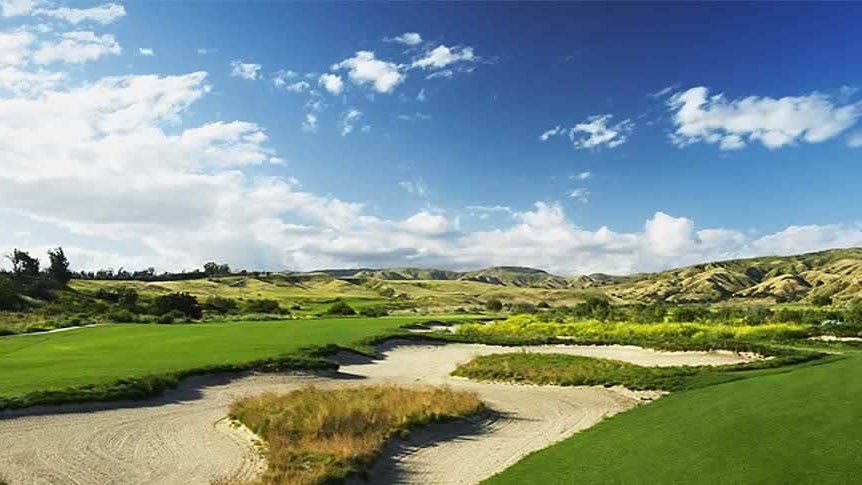
Thomas Brown: I admire Rustic Canyon as well, but I am stuck on George Thomas. Thomas developed the two municipal courses at Griffith Park in 1923-1927, named after Presidents Wilson and Harding. Griffith Park occupies more than 4,000 acres and is one of the largest urban parks in the nation. More than 200,000 rounds are played on the courses annually, including the City of Los Angeles Junior Championship each spring. Noel Freeman and I recently attended a Zoom symposium on golf course architecture, where we listened to historians Geoff Shackelford and Tommy Naccarato present the quality of Thomas’ routing and the benefits that would come from a restoration. Thomas must have thought enough of the property because, in the midst of the Roaring 20’s, the city told him that he would have to come out of his own pocket to finish the project, and he did. Two weeks from now, the PGA Tour is revisiting Houston’s Memorial Park, a municipal course that completed a renovation last year. With any luck, Griffith Park will get the attention it deserves as well.
Steve Lapper: Rustic Canyon and Santa Anita are the clear and worthy favorites. Both are very solid values and won’t disappoint. A mention should go to the Armand Hammer/Holmby Park Pony Course. This 17-18 hole public pitch-and-putt is unique in that it’s just behind LACC and set amidst Gatsby-like mansions. It’s a great place to bring a wedge, a putter and a beverage. No better place I can think of to hone your short game with a smile on your face, no matter the outcome of any shot.
Niall Hay: My initial response is Rustic Canyon, which is possibly the closest high-quality and affordable public-access course near where the guys are playing this week at Sherwood. The modern Hanse, Wagner & Shackelford LACC team design is a sharp contrast to the Thomas courses mentioned above. The arid nature of the location, combined with the minimalist design and the contours of the land, give the places the feel of a links. Think large greens, large fairways, and tightly mown grass. The browned-out “rustic” waste areas enhance the ambiance. But because I assume that every other person asked might offer the same answer, I’ll suggest two others: Rancho Park and Griffith Park, a pair of municipal courses that hosted the LA Open on multiple occasions.
Rancho Park is possibly the best of the true LA public courses. It’s also among the busiest golf courses in the country. Pace of play and conditioning can be an issue. The course has a rich history in that it was designed by Billy Bell and William Johnson, on the bones of an earlier Herbert Fowler design. It’s a stout test of golf. As a tournament venue, it has a couple claims to fame. It was the site of Jack Nicklaus’ first tournament and paycheck as a professional. It’s also where Arnold Palmer won his three LA Opens.
Griffith Park is a 36-hole municipal facility, designed by our man George Thomas. In fact, when the city of Los Angeles ran out of funding, Thomas himself put in the money to complete the project. Of the Harding and the Wilson courses, I recommend the Wilson, which was touched up at one point by William Watson. It’s very solid, and hosted the LA Open from 1937-1939.
Even in an area as well-traveled as LA, there has got to be a sleeper course or two. Tell us about your favorite.
Steve McHugh: While Lakeside may not be a sleeper, it does fly under the radar a bit. It has been redone, it is fun and great looking. It is a small piece of property, but a good, solid routing with loads of strategy and fun.
Noel Freeman: To me it would come down to Wilshire and Annandale (Pasadena). Wilshire is a well-known course that was recently restored and has a terrific history and strategies. Annandale was sympathetically renovated by Brian Silva and is a wonderful property with great bunkering. Either one would make a great day.
Thomas Brown: Yes! Add Todd Eckenrode’s par-3 course at Terranea as a contender for GOLF’s Top 25 Par-3 Courses in the World. Traffic is light right now, so let’s go east of downtown to Hacienda Golf Club in La Habra. Golf architect William Watson built the course in the early 1920s, on property that covers rolling topography, with a natural creek running through it. Notably, 18-year-old Tiger Woods set a course record 62 here en route to his victory at the 1994 Southern California Amateur Championship. Architect John Harbottle made revisions to the course in 2005 using the natural topography to bring the winding stream and canyon features more into play.
Steve Lapper: I’d go with Wilshire CC above all others. Discovered to some measure, it’s an intimate Kyle Phillips renovation set in Hancock Park that plays far bigger and bolder than its footprint. It’s no weak sister to the big three, and an invite here won’t ever disappoint.
Similarly, Brentwood CC, another well-done Todd Eckenrode renovation has re-invigorated itself into a sturdy members-course on LA’s tony Westside. It’s tougher than it looks and shot-values here are high. PS… Stay for the food as well. The kitchen plays at scratch!
Niall Hay: Originally designed by William Watson in 1921, Virginia Country Club in Long Beach was redesigned by A. W. Tillinghast and William P. “Billy” Bell some 10 years after opening. In 2015 Todd Eckenrod, restored the Tilly and Bell look and feel. He removed turf, expended greens, and redid the bunkering. The result is impressive. Not overly long by today’s standards, but there is enough variety and defense to make it challenging. Good greens and smart bunkering along with excellent conditioning make this a worthwhile drive from LA. If you make it down there, you may also see several PGA Tour players who work with VCC teaching professional Jamie Mulligan.
One more sleeper worth checking out is LACC South. It’s a nice contrast to the North course.
Lastly, a good friend recently recommended Hillcrest Country Club, a William Watson design that has been refreshed by Kyle Phillips.. Having seen the incredible work by Phillips at Cal Club, I cannot wait to see Hillcrest.
